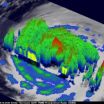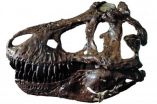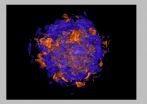(Press-News.org) London, UK (September 16, 2010) – Amid growing concern that synthetic life sciences pose biosecurity and biosafety risks, scrutiny is increasing into the burgeoning DNA sequence trade. Research published today in the Bulletin of the Atomic Scientists, published by SAGE, looks at the necessity of a global regulator for DNA trade, and the significant barriers to creating one.
Synthetic life sciences are making breakthroughs at a breakneck pace, and could offer technological fixes for our future ecological, technological, and biomedical challenges. But these benefits also come at a price.
Gabrielle Samuel of the Centre for Biomedicine and Society, Kings College London, UK, along with Michael Selgelid, of the Centre for Applied Philosophy and Public Ethics (CAPPE) at Australian National University in Canberra and Ian Kerridge from the Centre for Values, Ethics and the Law in Medicine at the University of Sydney, Australia, argue that the synthetic life sciences are not entirely benign. Their paper addresses regulatory options to respond to valid fears that this technology enables the synthesis of pathogenic agents, which could be used as biological weapons.
Policy recommendations on regulating the DNA sequence trade have generally focused on the regulation of longer, gene-length DNA sequences: It is easier to determine the nature of longer DNA sequences (i.e., what genes they contain and which organism, pathogenic or not, they come from). Further, the technology required to produce them is still relatively limited worldwide, and is often used in the synthetic life sciences.
At present there is no globally harmonized system to ensure all sales from DNA companies are for approved purposes. In Germany and in the United States, firms are required to limit the synthesis and delivery of specific, potentially dangerous DNA sequences to those researchers and institutions authorized to receive them. Many gene synthesis have a voluntary customer and order screening system in place. But in general, current screening practices are non-uniform and disorganized.
Samuel et al believe there is a strong case for creating a global clearinghouse to oversee centrally all DNA sequence ordering, and provide a better means of regulating the DNA sequence trade. The benefits include detecting when different companies are used for multiple orders; crosschecking national and international databases; and screening individual orders for inconsistencies.
Unfortunately, the technology required for an effective clearinghouse is not currently available. The present regulatory technological capability for the synthetic life sciences is, at best, embryonic. Existing screening software efficiency is low (generating too many false positives); screening processes are too easily evaded; and there is no agreed procedure for investigating and managing suspect sequence orders. The onus is on current policy makers to make developing better technology a priority.
"The biosecurity threats posed by the synthetic sciences are very real, and yet efforts to counter these risks are hindered by limitations in existing technology and by failure to develop biosecurity responses that cross national borders and bypass national interests," says Samuel. "It is crucial that political and financial support is made available to advance public policy in this area and to hasten the development of better regulatory technology."
Synthetic genomics is the chemical synthesis of DNA sequences. The synthesized sequences can already exist – as in the chemical synthesis of genes naturally found in an organism – or it can involve the synthesis of novel, unnatural DNA sequences. Synthetic biology is both the design and construction of new biological parts, devices, and systems and the redesign of existing natural biological systems for useful purposes.
Because the synthetic life sciences may enable the synthesis of biomolecules, whole genomes, and even simple life forms, these sciences have enormous potential, as they may logically be applied to any area of science or biomedicine that uses or works with genetic components, including pharmaceutical development, fuel production, detoxification of chemicals, genetic therapy, and environmental control.
###
Back to the future: Controlling synthetic life science trade in DNA sequences by Gabrielle Samuel, Michael J. Selgelid, and Ian Kerridge is published today (16 September 2010) in the Bulletin of the Atomic Scientists, 66(5) 1.
The article will be free for a limited period from http://bos.sagepub.com/content/66/5/9.full.pdf+html
The Bulletin of the Atomic Scientists
The Bulletin is an independent nonprofit 501 (c) (3) organization that publishes analysis and conducts forums about nuclear security, climate stabilization, and safety in the biosciences. Founded by Manhattan Project scientists from the University of Chicago, it links the work of scholars and experts with policymaking entities and citizens around the world. An international network of authors assesses scientific advancements that involve both benefits and risks to humanity, with the goal of influencing public policy to protect the Earth and its inhabitants. The organization's scientific advisory boards include 19 Nobel laureates, ambassadors, leading scholars, distinguished NGO officials, and public policy experts. The Bulletin is closely followed in Washington and other world capitals and uses its iconic Doomsday Clock to draw international attention to global risks and solutions.
SAGE is a leading international publisher of journals, books, and electronic media for academic, educational, and professional markets. Since 1965, SAGE has helped inform and educate a global community of scholars, practitioners, researchers, and students spanning a wide range of subject areas including business, humanities, social sciences, and science, technology, and medicine. An independent company, SAGE has principal offices in Los Angeles, London, New Delhi, Singapore and Washington DC. www.sagepublications.com
During the collision of India with the Eurasian continent, the Indian plate is pushed about 500 kilometers under Tibet, reaching a depth of 250 kilometers. The result of this largest collision in the world is the world's highest mountain range, but the tsunami in the Indian Ocean from 2004 was also created by earthquakes generated by this collision. The clash of the two continents is very complex, the Indian plate, for example, is compressed where it collides with the very rigid plate of the Tarim Basin at the north-western edge of Tibet. On the eastern edge of Tibet, the ...
A wall painting (fresco) of Tyche, the Greek goddess of fortune, was exposed during the 11th season of excavation at the Sussita site, on the east shore of the Sea of Galilee, which was conducted by researchers of the University of Haifa. Another female figure was found during this season, of a maenad, one of the companions of the wine god Dionysus.
"It is interesting to see that although the private residence in which two goddesses were found was in existence during the Byzantine period, when Christianity negated and eradicated idolatrous cults, one can still find clear ...
VIDEO:
New imaging technique developed by cardiologist, Dr. James A. White and colleagues at The University of Western Ontario shows 3-D image of the heart vasculature and myocardial scar tissue.
Click here for more information.
Cardiologists and surgeons may soon have a new tool to improve outcomes for patients requiring pacemakers, bypass surgery or angioplasties. Research led by Dr. James White and his colleagues at The University of Western Ontario has led to a new imaging ...
WASHINGTON, DC—Researchers at the Center for Neuroscience Research at Children's National Medical Center have discovered that the two major types of signaling pathways activated during brain cell development—the epidermal growth factor receptor pathway and the Notch pathway—operate together to determine how many and which types of brain cells are created during growth and repair in developing and adult brains. This knowledge may help scientists design new ways to induce the brain to repair itself when these signals are interrupted, and indicate a need for further research ...
NASA's Tropical Rainfall Measuring Mission (TRMM) satellite has provided a 3-D look at the power "under the hood" (of clouds) in powerful Category 4 Hurricane Igor as it heads toward Bermuda. In the meantime, Igor is creating dangerous surf in the eastern Atlantic, and it will affect the U.S. East coast later today. Igor is an extremely dangerous category four hurricane on the Saffir-Simpson hurricane wind scale today, Sept. 16, and he is expected to remain a large and powerful hurricane over the next several days.
The TRMM satellite, operated by NASA and the Japanese ...
We've all heard this story: the Late Cretaceous of Asia and North America—about 65 million years ago—was dominated by several large-headed, bipedal predatory dinosaurs like Tyrannosaurus rex and Tarbosaurus that had tiny arms. But a decade of new fossil discoveries that have more than doubled the number of known tyrannosaur species has changed this tale. Older and smaller tyrannosaurs have made the evolutionary tree of this group richer and more complex. Furthermore, a series of innovative research projects on topics like bone growth and biomechanics have added an enormous ...
Risk factors for venous thromboembolism after total hip replacement (THR) surgery were identified in a new study published in the September 2010 issue of The Journal of Bone and Joint Surgery (JBJS). While the rate of thromboembolism has been significantly reduced through medication, understanding the risk factors could further reduce the likelihood of patients developing this potentially fatal complication.
Two of the most common manifestations of a thromboembolism include:
Deep vein thrombosis (DVT), in which the blood clot forms in a deep vein, commonly in the thigh ...
AUSTIN, Texas — Many women with low sex drives reported greater sexual satisfaction after taking a placebo, according to new psychology research from The University of Texas at Austin and Baylor College of Medicine.
The study was conducted by Cindy Meston, a clinical psychology professor at The University of Texas at Austin, and Andrea Bradford, a 2009 University of Texas at Austin graduate and postdoctoral fellow in the Department of Family and Community Medicine at Baylor College of Medicine. They found that opening a new line of communication about sex can have a positive ...
For scientists, supernovae are true superstars -- massive explosions of huge, dying stars that shine light on the shape and fate of the universe.
For a brief burst of time, supernovae can radiate more energy than the sun will emit in its lifetime. With the potential energy of 25 hundred trillion trillion nuclear weapons, they can outshine entire galaxies, producing some of the biggest explosions ever seen, and helping track distances across the cosmos.
Now, a Princeton-led team has found a way to make computer simulations of supernovae exploding in three dimensions, ...
INDIANAPOLIS – There is no apparent link between asthma and tooth decay, according to a study published in the September 2010 issue of the Journal of the American Dental Association.
"Is There a Relationship between Asthma and Dental Caries?: A Critical Review of the Literature" examined the 27 separate studies which looked for a link between asthma and cavities that were reported in 29 papers published between 1976 and March 2010.
"The notion that there is a link between asthma and tooth decay may have its origin in anecdotal statements by emergency room workers who ...




